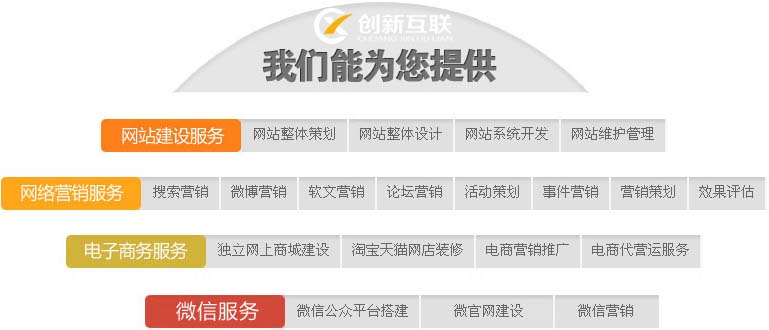深入理解Java之装箱与拆箱
一、Java数据类型

1、在说装箱与拆箱之前,先说一下Java的基本数据类型,Java从数据类型上可以划分为值类型与引用类型,值类型是四类八种,分别是:
- 整数型:byte̵,short̵,int̵,long
- 浮点型:float,double
- 字符型:char
- 布尔型:boolean
| 数据类型 | 内存 | 默认值 | 包装类 |
|---|---|---|---|
| byte | 8位 | 0 | Byte |
| short | 16位 | 0 | short |
| int | 32位 | 0 | Integer |
| long | 64位 | 0L或0l | Long |
| float | 32位 | 0.0F或0.0f | Float |
| double | 64位 | 0.0D或0.0d | Double |
| char | 16位 | \u0000 | Character |
| boolean | 8位 | flase | Boolean |
2、引用类型:
- 数组
- 类(class)
- 接口(Interface)
- 枚举(enum)
3、值类型与引用类型的区别
1. 从概念方面上来说:
- 值类型:变量名指向具体的值
- 引用类型:变量名指向数据对象的内存地址
2. 从内存构建方面上来说:
- 值类型:变量在声明之后,Java就会立刻分配给它内存空间
- 引用类型:它以特殊的方式(类似C指针)指向对象实体,这类变量声明时不会分配内存,只是存储
3. 从使用方面上来说:
- 值类型:使用时需要赋具体值,判断时用 ” == “号
- 引用类型:使用时可以赋null,判断时使用 equals 方法
二、Java数据类型转换
1、自动转换
- 定义:程序在执行过程中“悄然”进行的转换,不需要用户提前声明,一般是从位数低的类型向位数高的类型转换
- 优先关系:按从低到高的顺序转换。不同类型数据间的优先 关系如下:
- 低--------------------------------------------->高
- byte,short,char-> int -> long -> float -> double
- 转换规则:
运算中,不同类型的数据先转化为同一类型,然后进行运算
| 操作数1类型 | 操作数2类型 | 转换后的类型 |
|---|---|---|
| byte、short、char | int | int |
| byte、short、char、int | long | long |
| byte、short、char、int、long | float | float |
| byte、short、char、int、long、float | double | double |
2、强制转换
- 定义:强制类型转换则必须在代码中声明,转换顺序不受限制
- 格式:在需要转型的数据前加上“( )”,然后在括号内加入需要转化的数据类型
- 结果:精度可能会丢失,也可能更加精确
- int x;
- double y;
- x = (int)3.14 + (int)5.20 //精度丢失
- y = (double)x + (double)8 //精度提升
- 输出:x = 8;y = 16.0
三、Java之装箱与拆箱
1、包装类
- Java是面向对象语言,号称万事万物皆对象,因此,8种基本数据类型有了对应的类,这就是包装类
2、什么是装箱与拆箱
- 装箱:将值类型装换成引用类型的过程
- 拆箱:将引用类型转换成值类型的过程
- 自动装箱:
- int x = 3;
- Integer y = x; //int --> Integer,Integer y = x <==> Integer y = Integer.valueOf(x)
- 自动拆箱:
- Integer x = new Integer(5);
- int y = x; //Integer --> int,int y = x <==> int y = x.intValue()
3、装箱和拆箱是如何实现的
- 装箱过程是通过调用包装器的valueOf方法实现的
- 拆箱过程是通过调用包装器的 xxxValue方法实现的。(xxx代表对应的基本数据类型)
4、注意点:
- 大量使用自动拆装箱会使性能降低,还会造成大量的内存消耗
- 在重载方法中,可能出现问题
- List
list = new ArrayList<>(); - Integer x,y,z;
- x = 1;y = 2;z = 4;
- list.add(x);list.add(y);list.add(z);
- list.remove(2);
在上面这段代码中ArrayList.remove方法有两个重载方法,那么list.remove(2)是调用了哪个方法,remove掉的是值为2的对象,还是remove了index为2,值为4的那个对象呢?
在这种情况下,编译器不会进行自动拆装箱,所以调用的是remove(int index),index为2值为4的这个Integer对象会被remove.
如果要调用 remove(Object o)的方法,应该这么写 list.remove(y)
3. 缓存值问题
- 案例解析:
- Integer i1 = 100;
- Integer i2 = 100;
- Integer i3 = 200;
- Integer i4 = 200;
- System.out.println(i1==i2);
- System.out.println(i3==i4);
- Output: true false
- 观察源码:
Intteger.valueOf方法
- public static Integer valueOf(int i) {
- if (i >= IntegerCache.low && i <= IntegerCache.high)
- return IntegerCache.cache[i + (-IntegerCache.low)];
- return new Integer(i);
- }
IntegerCache类
- private static class IntegerCache {
- static final int low = -128;
- static final int high;
- static final Integer cache[];
- static {
- // high value may be configured by property
- int h = 127;
- String integerCacheHighPropValue =
- sun.misc.VM.getSavedProperty("java.lang.Integer.IntegerCache.high");
- if (integerCacheHighPropValue != null) {
- try {
- int i = parseInt(integerCacheHighPropValue);
- i = Math.max(i, 127);
- // Maximum array size is Integer.MAX_VALUE
- h = Math.min(i, Integer.MAX_VALUE - (-low) -1);
- } catch( NumberFormatException nfe) {
- // If the property cannot be parsed into an int, ignore it.
- }
- }
- hhigh = h;
- cache = new Integer[(high - low) + 1];
- int j = low;
- for(int k = 0; k < cache.length; k++)
- cache[k] = new Integer(j++);
- // range [-128, 127] must be interned (JLS7 5.1.7)
- assert IntegerCache.high >= 127;
- }
- private IntegerCache() {}
- }
从源码可以看出,在通过valueOf方法创建Integer对象的时候,如果数值在[-128,127]之间,便返回指向IntegerCache.cache中已经存在的对象的引用;否则创建一个新的Integer对象
- Byte、Short、Integer、Long四种包装类默认创建了数值为[-128,127]的相应类型的缓存数据,但是超出此范围仍会创建新的对象。
- Character默认会创建[0,127]的响应类型的缓存数据
- 两种浮点型没有实现常量池技术,在某个范围内的整型数值的个数是有限的,而浮点数却不是
| 包装类 | 常量池 | 常量池范围 |
|---|---|---|
| Byte | 存在 | [-128,127] |
| Short | 存在 | [-128,127] |
| Integer | 存在 | [-128,127] |
| Long | 存在 | [-128,127] |
| Character | 存在 | [0,127] |
| Float | 不存在 | 无 |
| Double | 不存在 | 无 |
- 注意点:
- 当 "=="运算符的两个操作数都是 包装器类型的引用,则是比较指向的是否是同一个对象,而如果其中有一个操作数是表达式(即包含算术运算)则比较的是数值(即会触发自动拆箱的过程)
- 对于包装器类型,equals方法并不会进行类型转换
- 算术运算会触发装箱与拆箱过程
当前文章:深入理解Java之装箱与拆箱
URL链接:http://www.csdahua.cn/qtweb/news14/332464.html
网站建设、网络推广公司-快上网,是专注品牌与效果的网站制作,网络营销seo公司;服务项目有等
声明:本网站发布的内容(图片、视频和文字)以用户投稿、用户转载内容为主,如果涉及侵权请尽快告知,我们将会在第一时间删除。文章观点不代表本网站立场,如需处理请联系客服。电话:028-86922220;邮箱:631063699@qq.com。内容未经允许不得转载,或转载时需注明来源: 快上网
- 阿里云服务器购买教程,如何购买阿里云服务器?(如何购买文件服务器)
- mysql拉丁文报错
- 配置Redis的配置文件路径(redis的配置文件路径)
- vps搭建多端口的方法是什么
- 帝国cms模板文件怎么打开
- MySQL如何创建和使用视图
- pkg文件怎么在windows系统上运行?(windows转换unix)
- 如何域名变更注册人?(怎么修改域名联系人信息)
- Linux新手指南:学习如何掌握Linux技能(linuxxx)
- 如何编写代码php
- 深入探索Linux文件中的宝藏(查找linux文件内容)
- Linux日志查看操作指南(在linux中怎样查看日志)
- web服务器怎么登录?(如何进网站服务器)
- 怎么弄,才能才会,输入域名就会转到空间首页呢?()
- 六大UML类图关系连连看